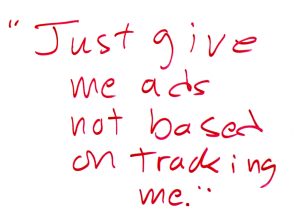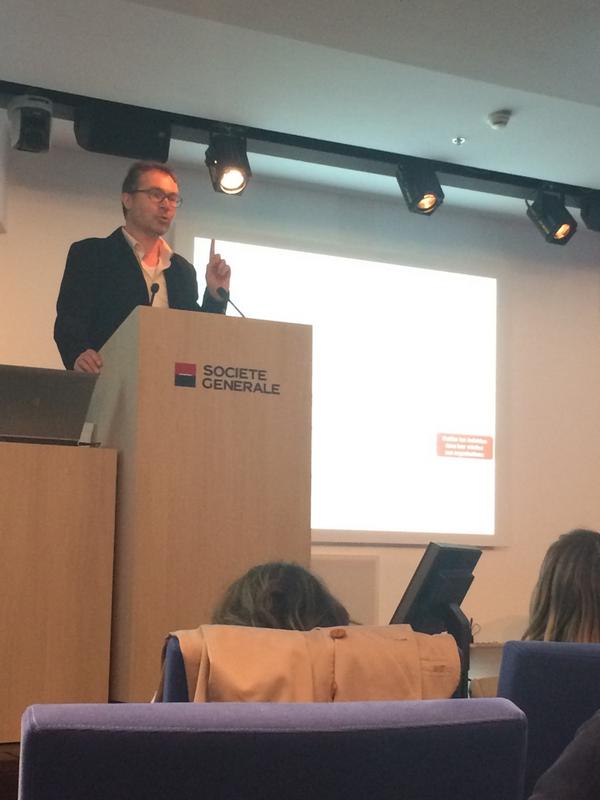
That’s a small sample of some great work by the artist R. Siskoryak, who (Wikipedia tells us), usually “specializes in making comic adaptations of literature classics”, but has now graphically adapted the complete text of what Joe Coscarelli (@JoeCoscarelli) of The New York Times (in Artist Helps iTunes’ User Agreement Go Down Easy), calls “the complete text of Apple’s mind-numbing corporate boilerplate” one must agree to before using iTunes.
The adaptation has its own Tumblr site, where it says, “@rsikoryak is on tour to promote the new color edition of Terms and Conditions: The Graphic Novel, out now from @drawnandquarterly.” Hence the image above. His well-illustrated bio there is fun too. You can also read the original Tumblr version from the beginning here.
He’ll be appearing (and, presumably speaking and showing) at the Strand Bookstore, 828 Broadway, 10003, with Kenneth Goldsmith, at 7pm this evening (Thursday, March 9). He’s already been in Baltimore. Next up:
- Pittsburgh, PA, Friday, March 17, 2017 – 6:00pm, ToonSeum with Copacetic Comics. 945 Liberty Ave, 15222
- Cincinnati, OH, Tuesday, March 21, 2017 – 7:00pm, Joseph-Beth Booksellers, 2692 Madison Ave., 45208 with Carol Tyler
- New York, NY, Friday, March 24, 2017 – 4:00pm, Spring Symposium, Cardozo Law Journal, moderated by Brett Frischmann
- Rochester, NY, Wednesday, April 12, 2017 – 4:00pm, Rochester Institute of Technology, Bamboo Room in the Student Alumni Union, 1 Lomb Memorial Dr, 14623
- Toronto, ON, Toronto Comic Arts Festival, Friday, May 12, 2017 – 9:00am to Sunday, May 14, 2017 – 5:00pm, Toronto Reference Library, 789 Yonge
Meanwhile, here are a few things we’ve been doing (both through ProjectVRM and CustomerCommons, which is working with the Consent & Information Sharing Working Group at Kantara) on terms and conditions you, the individual formerly known as “the user” (as if you’re on drugs) can assert as the first party. In other words, ways companies such as Apple can click “agree” to what you bring to the level table between you both. Four reasons they would do that:
- We have the Internet now. It’s a flat place. We don’t need to drag industrial age defaults that give companies scale across many customers, but don’t give individuals scale across many companies.
- Ours can have scale too. This is what Cluetrain promised in 1999 when it said we are not seats or eyeballs or end users or consumers. we are human beings and our reach exceeds your grasp. deal with it. Sure, companies haven’t heard of customer boilerplate before; but they do like consistency, simplicity, predictability, standardization and saving money and time. Customers’ scalable terms will bring them all.
- Our terms can be as friendly online as they are off. First example: #NoStalking, which can save the asses of publishers and advertisers, and maybe save journalism too.
- GDPR compliance. No need to worry about Europe’s new General Data Protection Regulation and its scary penalties when agreeing to friendly GDPR-compliant terms proffered by individuals obviates the whole thing.
Bonus links:
- EmanciTerm (An early brand-like name we came up with for a term an individual might assert. The two below are examples.)
- #NoStalking, which we explain in How customers can debug business with one line of code (19 April 2016 here, and in Medium), and in Why #NoStalking is a good deal for publishers (11 May 2016 here, and in Medium). Here is the current draft of the term itself.
- #Intentcasting, which we have visited in many posts here. Here is the current draft for some intentcasting terms.
We will also be visiting all of these—on both the first and second party sides—at VRM Day, and then at the 24th Internet Identity Workshop, which happen together the first week of May at the Computer History Museum in Silicon Valley.

 The
The difference between Phase One and Phase Two is
difference between Phase One and Phase Two is  Next steps in tracking protection and ad blocking. At the last VRM Day and IIW, we discussed
Next steps in tracking protection and ad blocking. At the last VRM Day and IIW, we discussed  Small businesses and their customers both have problems dealing with big businesses that are more vested in captive markets than in free ones. So, since VRM is about independence and engagement, we may have an opportunity for customers and small businesses to join in common cause.
Small businesses and their customers both have problems dealing with big businesses that are more vested in captive markets than in free ones. So, since VRM is about independence and engagement, we may have an opportunity for customers and small businesses to join in common cause. Crypt Ghost Be So
Crypt Ghost Be So  T.Rob
T.Rob  Geraldine McBride
Geraldine McBride  Marcio Rodrigues
Marcio Rodrigues 





 Dean Landsman
Dean Landsman 
 Sean Bohan
Sean Bohan  Adrien Blind
Adrien Blind 
 Alexander Ainslie
Alexander Ainslie  Bill Wendel
Bill Wendel 
 Ruud Knorr
Ruud Knorr 
 Jordan J. Caron
Jordan J. Caron  Michael Zeuthen
Michael Zeuthen  Gonzalo Aguilar
Gonzalo Aguilar  James Bryce Clark
James Bryce Clark  Phil Windley
Phil Windley  Nitin Badjatia
Nitin Badjatia  Jonathan Butler
Jonathan Butler